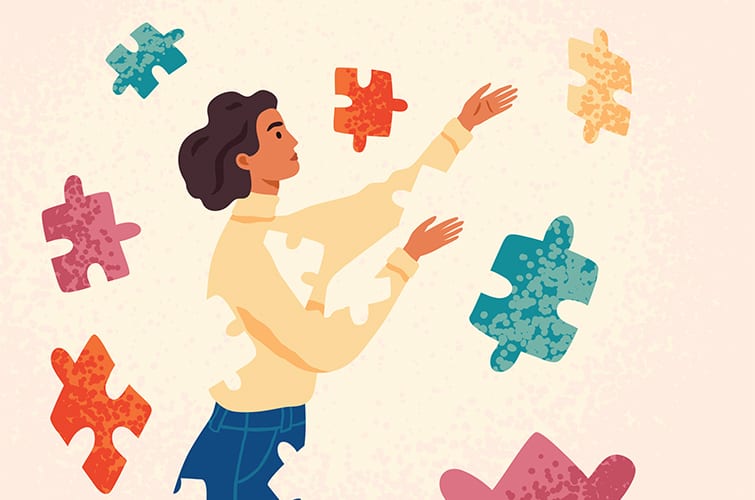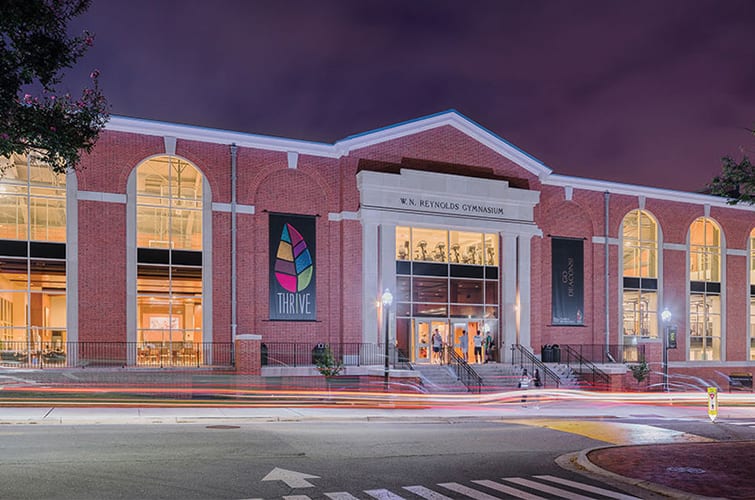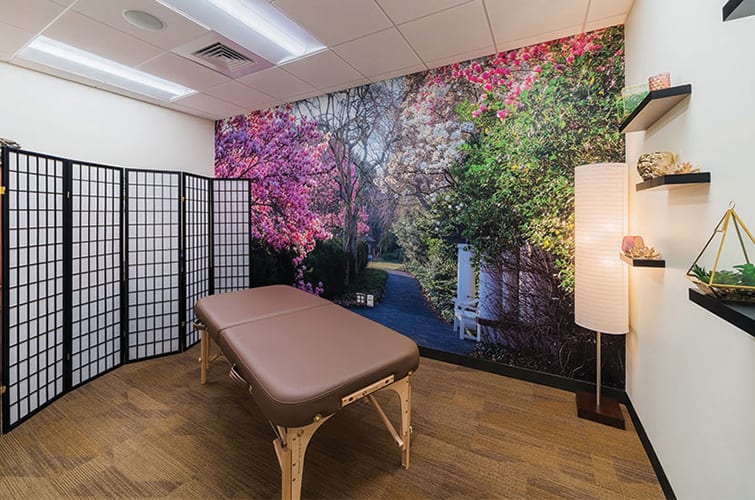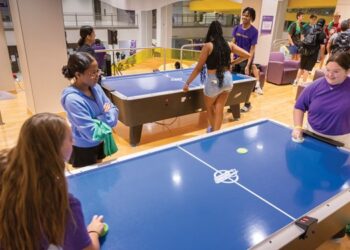
First it was wellness programs, and now it’s unique well-being offerings — but what’s the difference?
2020 has taken a toll on mental health, to say the least, and when originally discussing wellness in campus recreation, the goal was to create programming, awareness and access to mental health resources. Now, amidst a global pandemic, recreation professionals are stepping up and learning there’s more to it then just offering services and programs; rather it’s a whole new area of their profession with the goal of helping their community develop a sense of purpose — essentially what is known as well-being.
Virtual Unique Well-Being Offerings
One of the ways many schools have risen to the occasion during the pandemic to address having unique well-being offerings is through creating virtual programs. Joe Cassidy, the executive director of Campus Fitness and Recreation at Wake Forest University, shared his team collaborated with the Office of Well-Being and colleagues throughout Wake Forest to take their virtual offering a step further and created Thrive Remotely.
Thrive Remotely is an online hub of resources covering a variety of well-being topics such as meditation and mindfulness, anxiety and stress relief, gratitude, help with sleep, nutrition education, fitness and exercise, academics, and activities from home and for the family.
“It’s about trying not to immediately jump to being prescriptive,” said Cassidy. “If you go to the doctor with an illness, you don’t want the doctor to walk into the patient room and immediately prescribe something to you. We need to be able to listen to what we are hearing and respond.”

Cassidy elaborated this extends to all areas of a campus community, from students, faculty and staff to even the parents of students as he’s experienced through this program. One of the ways his team is ensuring they are listening and responding to their community is how they started the resource hub — with a shared Google document among Wake Forest colleagues.
“It allowed folks to add links to the resources they wanted to see up there, whether it was specific content they are creating or online apps and podcasts,” said Cassidy. “While our original intent was for our students and employees, not long after we launched it, we started to hear from parents of students. Even a mother looking for something for kids to do landed on our page and found the activities outlined for families at home. She thanked us for providing the resources and gave us two more links to add.”
Cassidy shared this is a resource they plan to keep for the time being as working from home and virtual offerings will be around longer than originally expected.
The Holistic Approach
At Ohio University, staff shared they learned by paying attention to what other schools were doing — in the areas of wellness dimensions to be specific — and found when addressing well-being through this path, they kept running into roadblocks. Mark Ferguson, the associate dean of students for Well-Being and executive director of Campus Recreation, said it was all about energy.
“Each part of our division had some of its own interest areas, so there wasn’t any energy coming together to make movement as a collective whole and that committee pretty much fizzled out,” said Ferguson. “So it really had us thinking about what to do when there’s not energy around those wellness dimensions as they tend to put people and departments into their own boxes, and not recognize the full scope and impact of their work.”
This is what transitioned his team into looking at well-being more holistically and defining it outside of wellness. “If we think about wellness the way we’ve generally described it, we would be thinking more about objective elements such as physical, mental, career, etc.,” said Tony Gregory, the assistant director of Well-Being and Fitness at Ohio University. “Those elements are clearly measurable, versus with well-being, we’re thinking from a lens of how someone views they have a sense of purpose in their life.”

So how do you create or decide what unique well-being offerings or services your campus community needs? As Cassidy said with his team at Wake Forest, there’s no prescription, and the same resonates with staff at Ohio University. This is why they created their own path and added well-being to all programs throughout their department.
“Yes we have well-being programs, but our target is developing programs based on: are we able to help people better understand the purpose or the values in which their actions have; what are the meaningful relationships they’re able to have or form through our programs; the sense of achievement they get by completing a program or challenge; and how resilient they are in being able to overcome a challenge,” said Wes Bonadio, the director for Well-Being and Health Promotion at Ohio University.
Ferguson further elaborated the driving force behind their approach is the fact everybody’s well-being is unique to them and that’s what brought his team away from focusing on dimensions of wellness. “It is about personal reflection and understanding what is meaningful to that individual, and not necessarily dictating any one dimension or activity as being the solution to an entire student body,” he said.
Actionable Changes
If you’re looking to make a similar change in your offerings, Ferguson said a good place to start is taking advantage of your staff strengths. “Each staff member always brings a unique lens to the picture and you have to take advantage of that to really develop a full scope of what well-being is and the individual contributions they can make within your department,” he said.
But the biggest change to recognize in offering holistic well-being is not to force a path that doesn’t have buy-in, but rather to sit down with your team, with campus influencers, and to listen and acknowledge the needs of your community so you can respond effectively.
“I don’t know if there is a perfect, prescriptive path to take, and unfortunately, I think each campus and each culture needs to figure out its own way,” said Ferguson. “I think the COVID situation is the perfect example to show we cannot be identified strictly by our facilities because when those facilities go away, what are you left with? You can’t pigeonhole your thinking into one avenue of how you’re reaching students.”
Gregory shared one of the best ways to learn from your community is through continued assessment, stating one of his team’s learning outcomes is well-being. Instead of only measuring attendance numbers for classes, they focus more on measuring the increased sense of accomplishment, confidence, willingness to seek new experiences, increased belief in self and increased connection to the university.
Overall, and due to the pandemic, Bonadio said he’s learned his team can’t afford to just be recreation professionals. “As our world continues to evolve, so does our profession,” he said. “Schools need to take a step back and explore what is working, what’s not and what process needs to be put in place for their community. You can’t just pick up something someone else is doing, stick a tagline on it, move it forward, and expect it to be meaningful or sustainable.”










